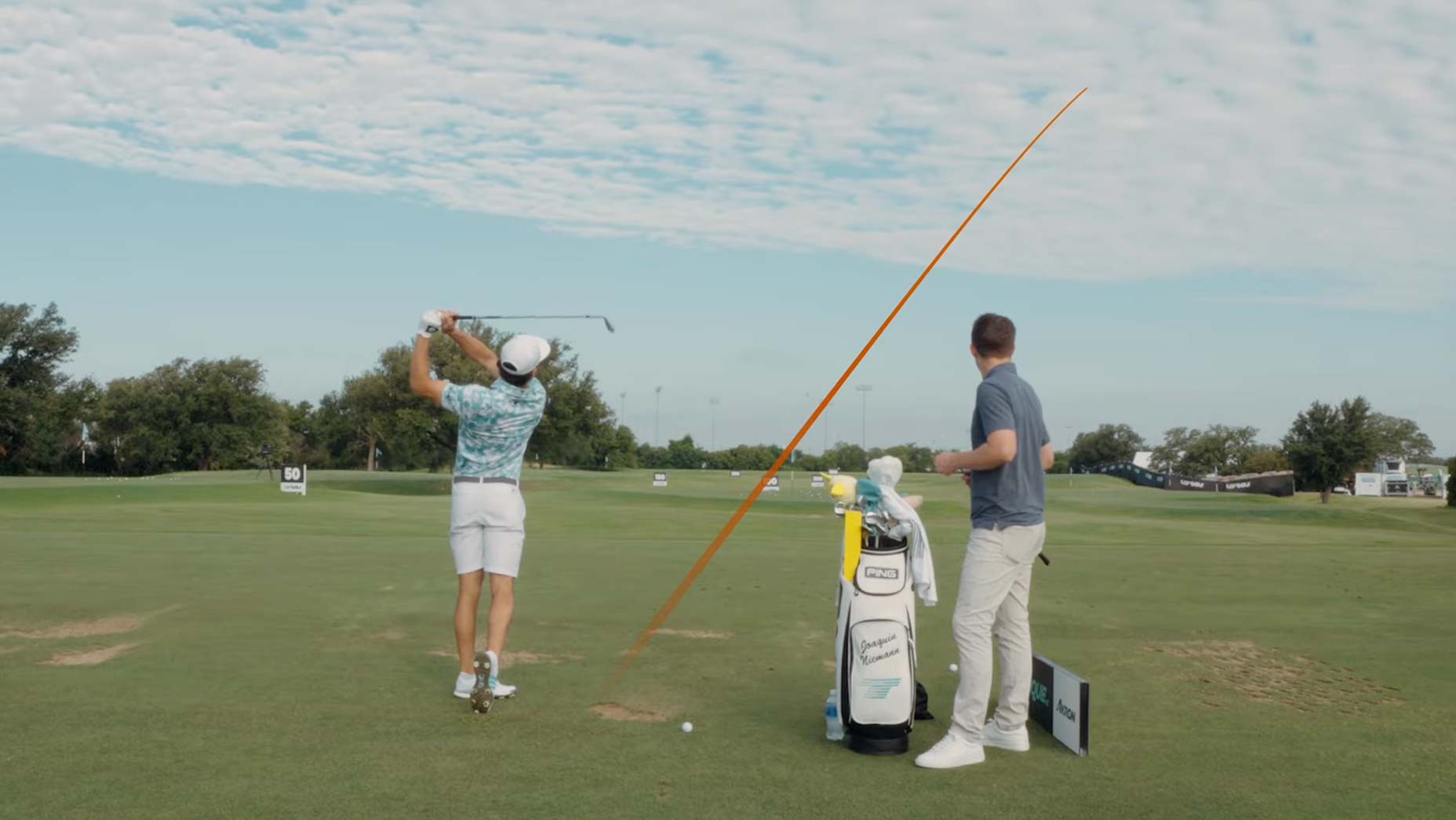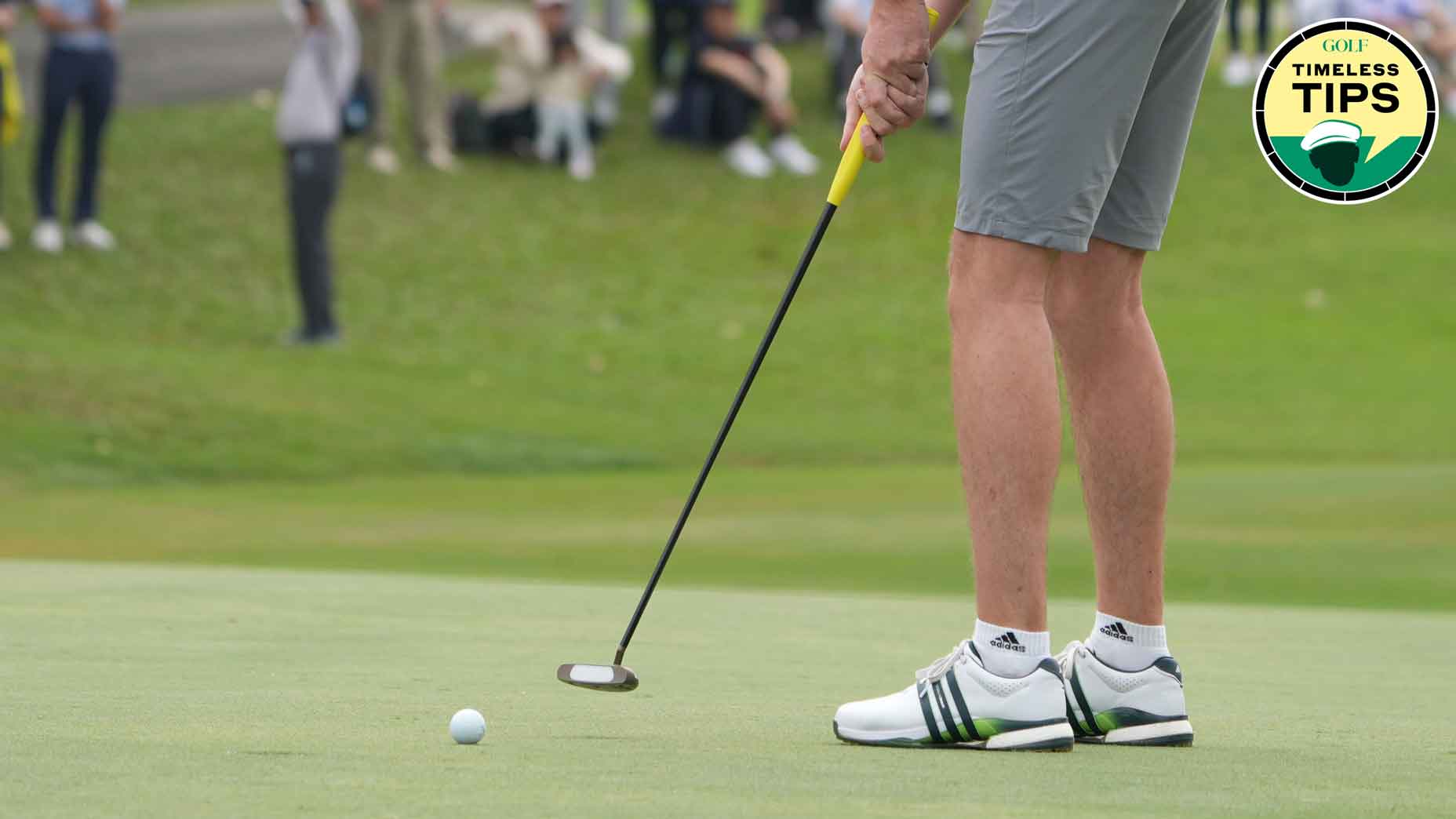Known for his bomb-and-gouge style, Dustin Johnson doesn’t just hit drives — he pulverizes them. Fans always ask how he generates so much speed and distance off the tee, but that’s only half the equation. What most amateurs overlook is what comes next: the precision of his wedge shots.
Sure, bombing it is fun — but if you want to score, you’ve got to be able to answer with your wedges.
In a recent episode of Warming Up with GOLF’s Dylan Dethier, Johnson revealed the tool that helped him dial in his wedges, and the three-shot method that increased his distance control and confidence on these key scoring shots.
Johnson begins the video by giving us a peek into his pre-round routine: first an off-site workout, then a dynamic warm-up at the course to activate the body, followed by a few technical putting drills.
Only then does Johnson head over to the range. Starting, as most pros do, with wedges — and always with a key practice tool in tow: his Full Swing launch monitor.
How a launch monitor transformed DJ’s wedge game
While it’s standard to see launch monitors lining the range at today’s tour events, Johnson says there was a time when he didn’t depend on these data-driven machines. Relying mostly on feel, Johnson didn’t use a launch monitor extensively in his practice until around 2016 — the year he won the U.S. Open — and the change quickly proved to be worthwhile.
After making the change, Johnson’s wedge game improved immensely. In just one year, he climbed from just inside the top 40 in proximity to the hole on approaches inside 100 yards to ranking third best on tour. A breakthrough Johnson credits to the addition of his launch monitor.
“I really wanted to start dialing in my wedges,” he said, “For me, that [incorporating a launch monitor] was probably the biggest difference. Just getting instant feedback.”
As Johnson fine-tuned his distances and accuracy, he realized that the launch monitor was also boosting his on-course strategy.
“It helped a lot on say a par-5 that I maybe couldn’t reach, or maybe I hit it in the rough,” he says, “Instead of just blasting it down as close to the green as possible, I would lay it up to 85, 95 or 105.”
Leaving it to one of his preferred yardages gave Johnson the confidence to attack pins with this three-shot approach.
DJ’s 3-shot approach
One of Johnson’s biggest keys for better wedge play is consistency. Starting every range session with the same simple, but effective wedge routine.
“I kind of have three shots with each wedge,” Johnson says, “A half, a three-quarter and a stock. And so I’ll kind of work through those with all three of my wedges.”
Take for example, Johnson’s 60-degree. On his half swing, the ball should carry 85-yards. On his three-quarter swing, 95-yards. And his stock swing should result in a 105-yard shot. This is where the fast, accurate feedback of the launch monitor is key. After every shot, Johnson is able to confirm if the ball traveled the right distance.
“I’ll hit a few shots at each distance,” he says, “And then if I’m struggling, I’ll keep hitting until I feel comfortable.”
It may be a simple approach, but sometimes that’s exactly what works — after all, it helped him win two majors.










